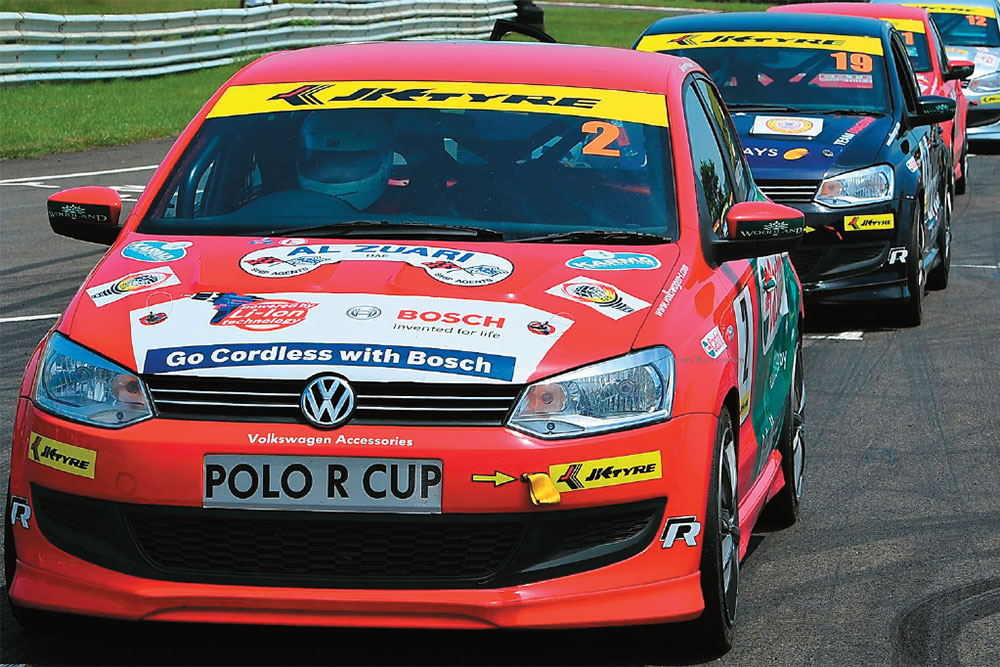In 1904, when the first motor rally in India was organised with special permission from the viceroy, Lord Curzon, the race was about neither speed nor difficult terrain. The aim of the rally, which covered 960 km between Delhi and Bombay around Christmas that year, was simple — to test the reliability of the vehicles on Indian roads and make them popular in the country. The maharaja of Mysore, Nalwadi Krishna Raja Wadiyar, even announced a special prize for the car that arrived in Bombay in the “smartest condition”. Only amateur drivers could participate in the Indian Road Race and the vehicles took well-carved out routes that allowed their owners — maharajas and the ultra-rich — to show off their possessions.
Fast forward nearly 110 years. Motorsports is all about tough terrains, building brands, connecting with the youth and testing vehicles to help R&D. Not surprisingly, almost all companies in the automotive space — and many outside it — want to be part of the motorsports circuit in India. While JK Tyres and Maruti Suzuki are perhaps the pioneer, having been associated with the sport since the 1980s, and others such as MRF and the oil PSUs too have long associations, companies such as Mahindra & Mahindra, Tata Motors and Toyota have entered the circuit as late as 2011.
The association isn’t about mere sponsorship and putting their logos on cars and drivers’ racing suits. These companies are creating a presence in motorsports either by setting up their own teams to participate in popular national and international events, or even starting their own events.
Toyota’s Etios Motor Racing, which involves driving training programmes, road shows, exhibition races and a one-make race championship is scheduled for later this year. Volkswagen flagged off the first Polo R Cup in 2010, just a few days after it unveiled the new version of the Polo. And in 2011, Tata Motors set up its motorsports division, Full Throttle to compete in existing rallies and races and organise its own off-road and motorsport activities, which will help promote the sport in India and showcase the company’s vehicles.
Then there’s M&M, which forayed into the two-wheeler market in 2009, and is using motor racing as a platform to not only develop technology, but also create awareness about its brand. In 2011, Mahindra Racing became the first Indian team to participate in the FIM MotoGP World Motorcycle Racing Championship and the Italian National Motorcycle Racing Championship the following year. “Our participation in racing will help us develop our two-wheeler technology, significantly shortening technological learning curve. It also helps showcase our engineering and technology expertise,” says SP Shukla, president, group strategy, and chief brand officer, M&M.
The reasons M&M entered motorsports are precisely what led market leader Maruti Suzuki as well to foray into the segment over three decades back. “We look at motorsports as the ultimate test of man and machine; it is a perfect fit for auto makers,” says Mayank Pareek, managing executive officer, marketing and sales, Maruti Suzuki India. “When you try your cars in Siachen and other tough areas, you get tremendous feedback [on the car’s performance], which is incorporated in future products.”
Maruti flagged off its flagship event, the Raid-de-Himalaya, in 1998. In addition, it also conducts other annual events such as Desert Storm, Dakshin Dare and the Young Driver Contest. Interestingly, these aren’t one-make races — participation is open to vehicles of any make. Not surprisingly, then, the events see large turnouts. While 275 people participated in the Storm Rally in February 2013, Raid de Himalaya had 260 drivers last October. In contrast, Volkswagen’s event is more exclusive, restricted to just 20 drivers.
As a marketing and brand-building strategy, the involvement with motorsports should strike the right chord. According to automakers’ estimates, the average age of a car buyer has come down from 46 a decade ago to 36 now. In 2007, 10% of car sales came from customers below 25 years of age. Today, about 16% of cars are bought by under-25s. The best way to reach out to this target group is through activities they enjoy and that includes motorsports — of Formula One’s viewership of 550 million across the world, about 30 million are estimated to be Indians. And the average age of participants in amateur motorsport events is 34.
The Indian Grand Prix has certainly helped. “Bringing F1 to India has created a new level of interest in motorsports and automakers are leveraging that,” agrees Karun Chandhok, racing driver and motorsports consultant.
No company is willing to say how much it is investing in motorsports, but Chandhok says the biggest investment is typically in the car hardware — making the vehicles ready for racing. “Companies have to make extra investment in safety systems, roll cage, make modifications to the engine, gear boxes and suspension and use special tyres for racing vehicles.” For example, an Etios that costs ₹5 lakh on road can go up to ₹6.5 lakh when customised for the race track.
Compared with the returns generated, most companies believe the expenditure on motorsports is money well spent. “It provides a platform for customer engagement and association with the brand, which makes it worthwhile to invest in it,” sums up Pareek.











